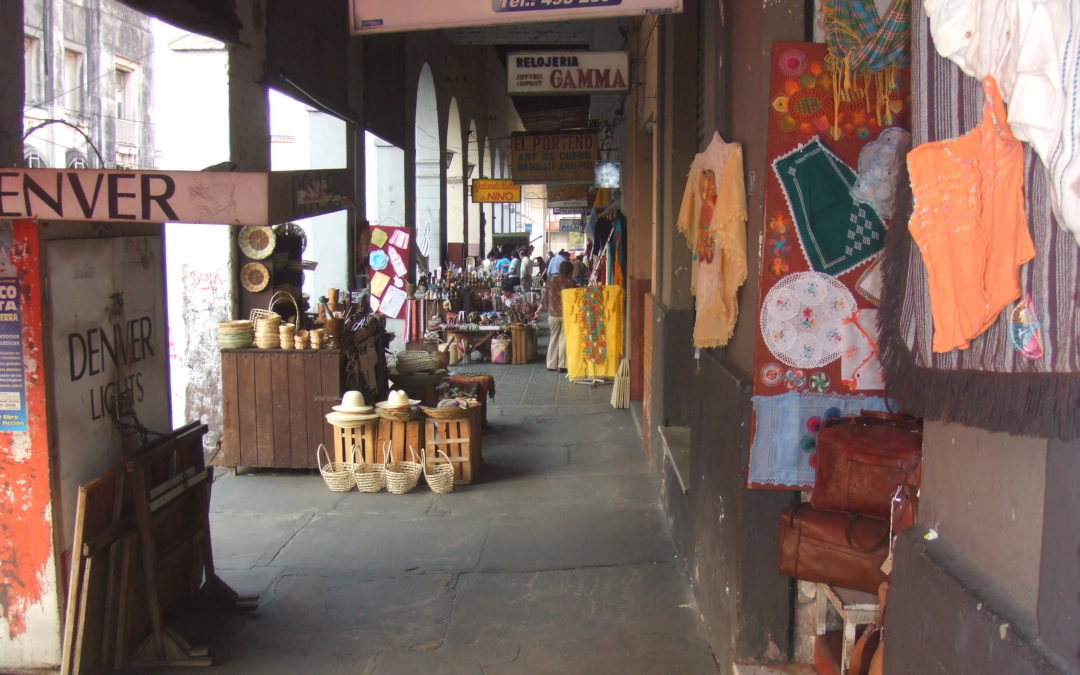Traditional handicrafts are an ideal souvenir of almost any country. Paraguay is not exception.
The handicrafts of Paraguay have long tradition. Most dating back to the Spanish colonial period and some further back still. Whilst many are these days made purely as souvenirs there some that remain in everyday use in modern Paraguay.
The majority of hand crafted items are made from either wood, textiles or leather. Traditional items are also to be found made from other materials such as ceramics or feathers. However it is wood, textiles and leather that dominate the traditional arts of Paraguay.
In terms of wood work Paraguay has many woods that are ideal for carving. None better than the Palo Santo which not only carves well but has a grain which leaves a beautiful pattern across the finished work. Also softer woods such as balsa which are soft and easily carved can be found.
Typical wood carvings reflect the culture, peoples and fauna of Paraguay. Figures from Paraguayan mythology are a common theme as are images of saints. In this strongly Catholic country every house contains the figure of at least one saint. In addition carving of people and scenes from rural Paraguay can readily be found. Figures in traditional dress, ox carts, traditional houses and animals from across Paraguay are all made.
From softer balsa wood hanging items are made. These may be brightly painted birds such as parrots or toucans or masks and other wall hanging made in indigenous styles. In my house I have a toucan and a couple of masks.
One final wooden item is the guampa, the mug from which Paraguayan terere is drunk. This may be of any wood, but again the best are made from Palo Santo. Terere is an important part of the Paraguayan identity and so in every house across the land there will be found several guampas along with the silver bombilla straws for drinking the terere.
The guampas are often painted with bright designs. A Paraguayan flag and cultural items such as a harp or a native bird are common motifs. Some however are simply painted with advertising designs. If not painted the guampa may instead be wrapped in leather. Sold with the guampa and bombilla is the two litre flask for holding iced water. These are decorated similar to the guampas so as to make a set.
Next are the textiles. these come in two forms either as fabrics or clothing.
The finest of the fabrics is the Nanduti lace. This hand made lace translates as spiders web lace and is aptly named. The delicate generally symmetrical patterns are hand woven from fine lace often in a number of colours so as to build up the design. A large example can be quite costly so where as smaller pieces may be used as table mats larger ones are framed for display upon walls.
Another traditional textile is Ao P’oi. This is a loosely woven cotton fabric. It is a fine fabric for table cloths. Further to that Ao P’oi makes good quality shirts and blouses, often with designs stitched down the front. Like the guampa and the bombilla it remains part of current day Paraguay. School teachers and office workers will often dress in an Ao P’oi shirt.
The third common material for souvenirs is leather. This is hardly surprising in a country where cattle ranching is part of the culture and of every day life. Like the beef in Paraguay the leather is also of a very high quality.
Two of the most common items to be found made from leather are hand bags and boots. The leather is almost never plain but instead comes with intricate designs across it. Leather cowboy hats are also too be seen and all are of high value and quality.
With so much fine leather around there is almost nothing it can’t be used for. From purses and pencil holders to wall maps and art works.
These items can all be found all across Paraguay. Asuncion though does contain the majority of the souvenir shops. These can be found in central Asuncion either along Calle Palma or Calle Colon where a whole block adjacent to the port is dedicated to handicrafts. Also many of the shopping centers contain a shop selling nothing but handicrafts.
Outside shops traditional hand crafts are also sold by indigenous women. They lay out blankets along the pavements of Calle Palma from which to sell their hand made produce. Often identical to but far cheaper than that which is found in souvenir shops.
The center of Asuncion is not however the best place to find these indigenous wares. That surprisingly is Asuncion bus terminal. There produce can be laid out sheltered from the elements every day of the week.
Outside Asuncion the best places for encountering traditional handicrafts are either where they are made, and are therefore much cheaper. Such as Nanduti lace in Itagua or in tourist centers. A good example of this is Caacupe. There many people descend upon the town for the festival of the Virgin of Caacupe every December and a tourist industry has grown up to cater for their needs.
These are but the most common of the colourful traditional hand crafted souvenirs to be found all across Paraguay. A search through stalls and markets would quickly bring forward many more equally interesting items.


Very interesting reading
I am glad it was. I think I bought over for you a good selection of handicrafts over the years
Paraguay is opening things up for the hemp industry. If you have experience, maybe you can mobilize some of these people good in handicrafts to make hemp items. Let me know if interested.